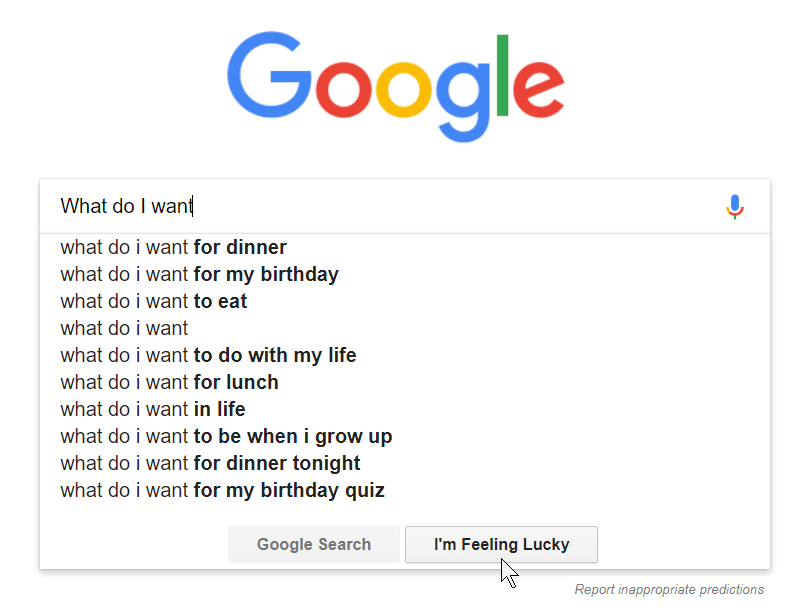
01 Feb Why Leveraging User Intent Is Your Single-most Important Strategy
Before I show you why user intent is important for online advertising, first, you have to understand the notion of intent-based signals.
Intent-based marketing involves any kind of marketing that aims to meet a prospective customer’s intent to be fulfilled for whatever it is they need or want at that particular moment. This could be a question or problem being asked of Google or even a product being searched in Amazon. It is the job of the advertiser to take that intent, also known as buyer intent, and lead them into the customer buying cycle. Generally, the more purposeful the intent, the hotter the lead or sale.
 Scales of Intent – Source: DK Media
Scales of Intent – Source: DK Media
Advertising specialists use intent signals as a powerful tool in both paid and organic search marketing. Typically their aim is to understand what the user wants and they try to give it them via a product, service or piece of content. To do this, they must understand the motivations behind the search query. They often use keyword searches that contain high commercial search keywords as signals from potential customers to drive direct advertising campaigns containing products, services or solutions to whatever the potential customer requires, at that moment.

Using data from buyer or user intent is important for online advertising as it allows you to improve your advertising and marketing tactics. This can be done through content marketing, keyword optimisation for high intent keyword rankings and lead generation/conversion.
User Intent In Your Content Strategy
When creating a content strategy for existing or targeting new followers you’ll first need to identify which stage of the buyer journey they’re in.

Keywords by Funnel Stage – Source: The Whole Brain Group
By understanding the intent of why they read and engage with specific posts or subscribe to particular emails, you can create a content strategy around those intentions. By creating informative posts that provide educational answers or solutions to their pain-points can gently persuade them to take action and push them further through their buyer journey, towards making a purchasing decision.
In content strategies, it’s quite common that buyers who search using broad generic terms and keywords are searching with the intent to learn and seek information. These type of keywords will not generate intent to purchase but can be the first phase of the customer buying cycle, also known as discovery.

Three categories of intent – Source: Moz
By targeting specific keywords that include, “reviews”, “benefits” or “recommendations” in your content strategy, you are targeting keywords associated with buyers who have the intent to make a purchase. These types of content provide solutions, answers and recommendations to buyers who are further down the sales funnel, and these type of buyers who are quite specific in their searches, have a clearer intent to purchase
Advertisers can use this data to create content with the relevant headlines and keywords that will address and provide a solution to needs or wants that are relevant to them. By defining, prioritising, and documenting which keyword opportunities provide the best buyer intent at the different stages of the buyer/sales cycle, advertisers can determine what keywords and content can generate leads.
User Intent In Lead Generation
Content is only half of the story. We can make better ads too.
Using the results and data obtained from the content strategy, advertisers can increase prospective customer qualification by determining where they’re positioned in the sales funnel and customer buyer cycle. As an advertiser, you can then use this user/buyer intent data to your advantage by ensuring your ads play to intent-based emotions too.
The goal of any ad is a click/engagement. The barrier to these is friction. Friction occurs when we feel that the ‘next step’ isn’t quite what we want. We hesitate and often bounce.

Motivate users with greater relevance – Source: UI Patterns
The key to removing friction is increased motivation. We can do this by increasing relevance and context. Through targeted advertising, you can then use personalised ads and messages that speak directly to your highly-qualified leads. Using segmentation in your advertising campaigns to target higher prospects with a higher intent to purchase you greatly increase the likeliness of converting these leads into customers.
With this data, you’ll have better knowledge of which leads are more intent to make a purchase and you can prioritise, and decide, the most effective way of pursuing these particular leads. Using intent data can remove the uncertainty of whether a lead will make a purchase or if they’re just browsing for information. Which in turn, helps your better organise your media budget, attention and resources.
Conclusion
With user/buyer intent data in the hands of an advertiser, campaigns can be used to target specific leads with a higher intent of purchasing in comparison to campaigns with the goal of trying to generate leads. By focusing your advertising budget on nurturing leads with buying intent, you’ll have a greater advantage of increasing conversions and reducing the cost of customer acquisition.



No Comments